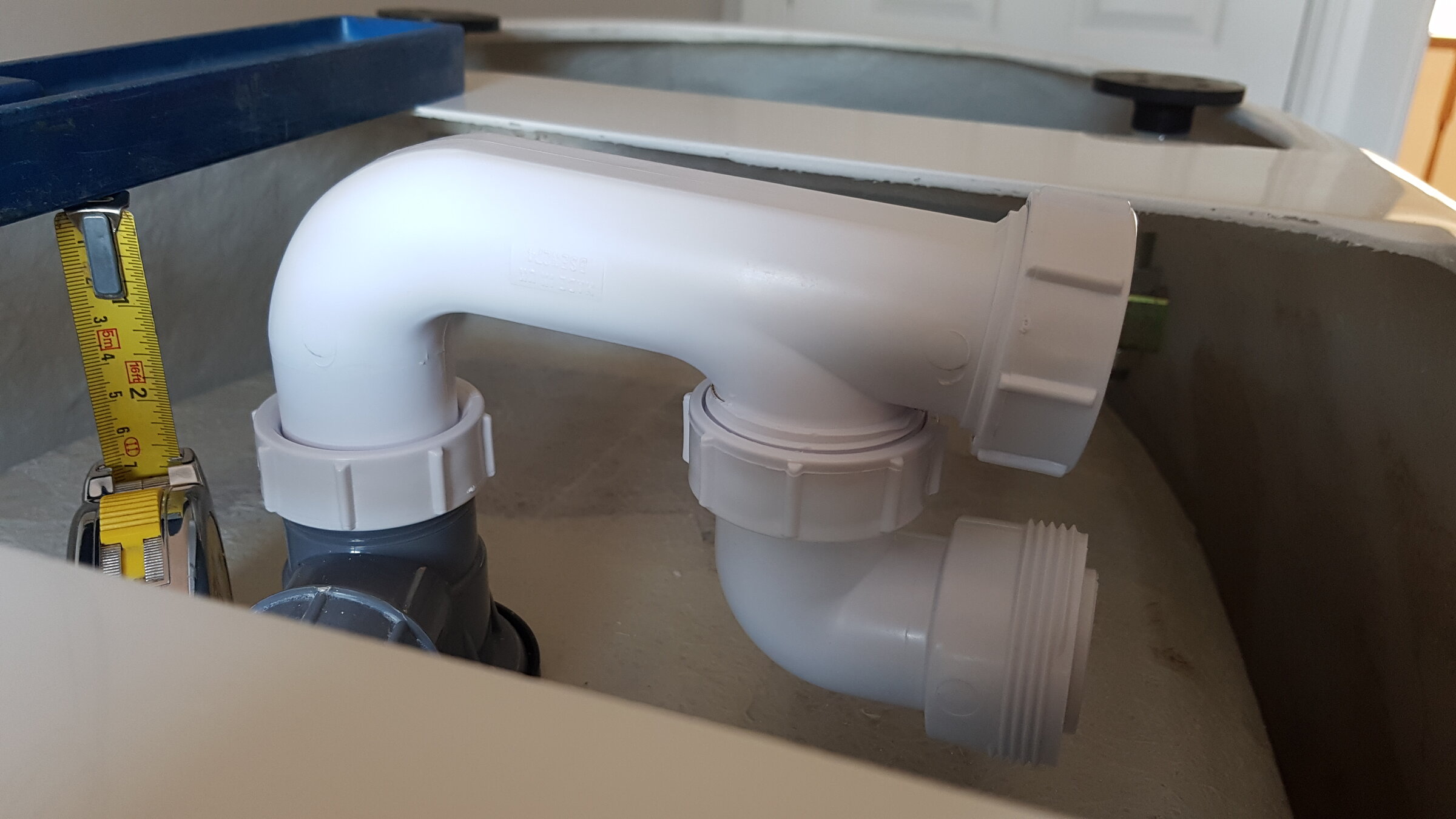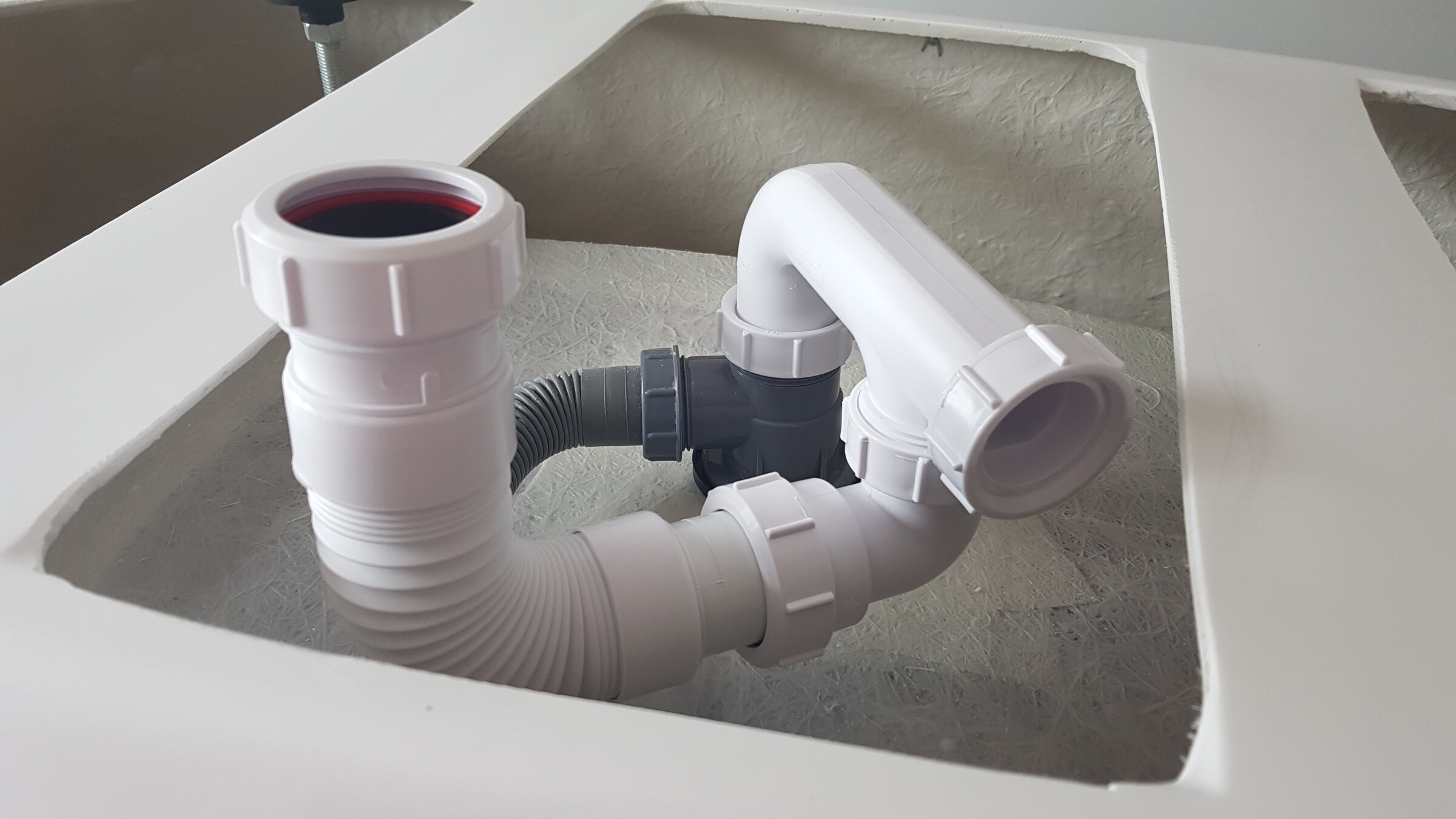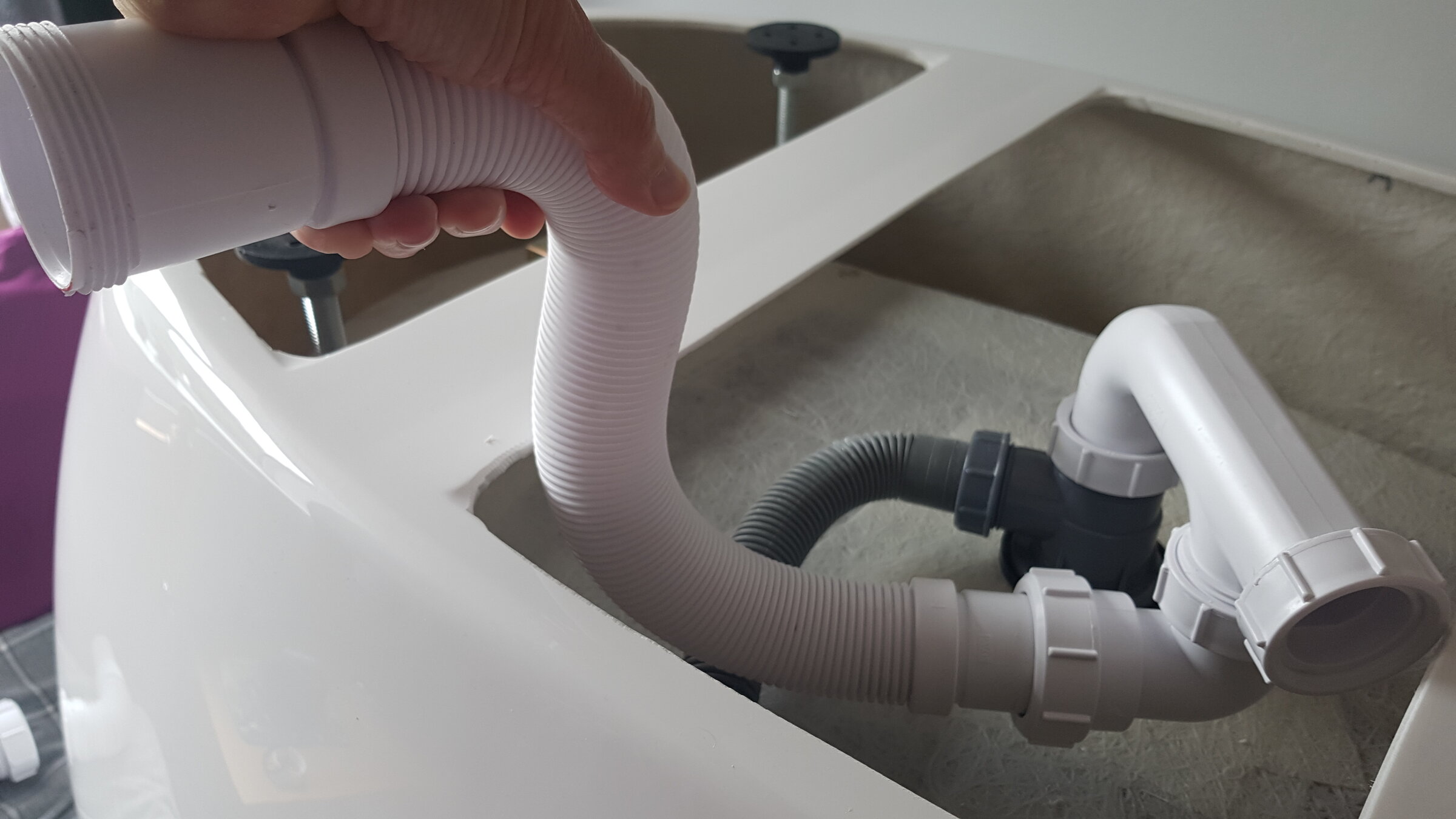Today I picked up a McAlpine trap and a Flexcon6, which I thought would help me plumb in my floorstanding bath, but it hasn't worked as expected.
When I screw the trap to the waste on the bath, the trap is within the void underneath the bath. I bought the flexcon6 as I thought one end would screw onto the waste and the other end onto the trap and this would give some flexibility to fit the trap with the bath sitting on blocks, then remove the blocks to allow the trap to sit below the floor surface, in a hole cut through the floor under the bath.
It hasn't worked because the flexcon6 isn't designed to screw onto a bath waste. Doh!
Here's a photo of the issue:
It looks like the screw fitting is about 7cm below the bath base, so I think I need to use something to extend the trap to fit outside of the bath base (which is why I originally purchased the flexcon6).
I'm wondering if the McAlpine Flexcon9 is what I need? This has a BSP coupling nut at one end (connect to waste) and a BSP male thread at the other (connect trap to it?). I could then simply use a 40mm pipe and nut to connect to the output end of the trap. The flexibility of the flexon9 allows me to raise the bath to screw it to the underside before lowering it. I guess the only potential issue is that if it is too long I may not get the fall on the waste pipe!
Alternatively, I wondered if this BSP female to BSP male coupling might be the right thing to use to allow the trap to be fitted lower. I suspect the 3" version would be required. I'm assuming the waste pipe connect to the trap might need a flexible fitting to allow some movement due to the bath being raised, then lowered?
I've just come across this adjustable trap, which may also work as it allows the trap to be lowered. Wish I'd seen this before! I guess I would still need to incorporate a short piece of flexible pipe in the waste run to the outside wall, which would allow the trap to be screwed into the waste while the bath was raised, and then lowered into place? The run from the bath waste to the outside wall is 48cm so I guess even plastic pipe would allow a bit of movement, but I'm not sure it would be enough (depending on the diameter of the hole going through the outside wall).
When I screw the trap to the waste on the bath, the trap is within the void underneath the bath. I bought the flexcon6 as I thought one end would screw onto the waste and the other end onto the trap and this would give some flexibility to fit the trap with the bath sitting on blocks, then remove the blocks to allow the trap to sit below the floor surface, in a hole cut through the floor under the bath.
It hasn't worked because the flexcon6 isn't designed to screw onto a bath waste. Doh!
Here's a photo of the issue:
It looks like the screw fitting is about 7cm below the bath base, so I think I need to use something to extend the trap to fit outside of the bath base (which is why I originally purchased the flexcon6).
I'm wondering if the McAlpine Flexcon9 is what I need? This has a BSP coupling nut at one end (connect to waste) and a BSP male thread at the other (connect trap to it?). I could then simply use a 40mm pipe and nut to connect to the output end of the trap. The flexibility of the flexon9 allows me to raise the bath to screw it to the underside before lowering it. I guess the only potential issue is that if it is too long I may not get the fall on the waste pipe!
Alternatively, I wondered if this BSP female to BSP male coupling might be the right thing to use to allow the trap to be fitted lower. I suspect the 3" version would be required. I'm assuming the waste pipe connect to the trap might need a flexible fitting to allow some movement due to the bath being raised, then lowered?
I've just come across this adjustable trap, which may also work as it allows the trap to be lowered. Wish I'd seen this before! I guess I would still need to incorporate a short piece of flexible pipe in the waste run to the outside wall, which would allow the trap to be screwed into the waste while the bath was raised, and then lowered into place? The run from the bath waste to the outside wall is 48cm so I guess even plastic pipe would allow a bit of movement, but I'm not sure it would be enough (depending on the diameter of the hole going through the outside wall).




